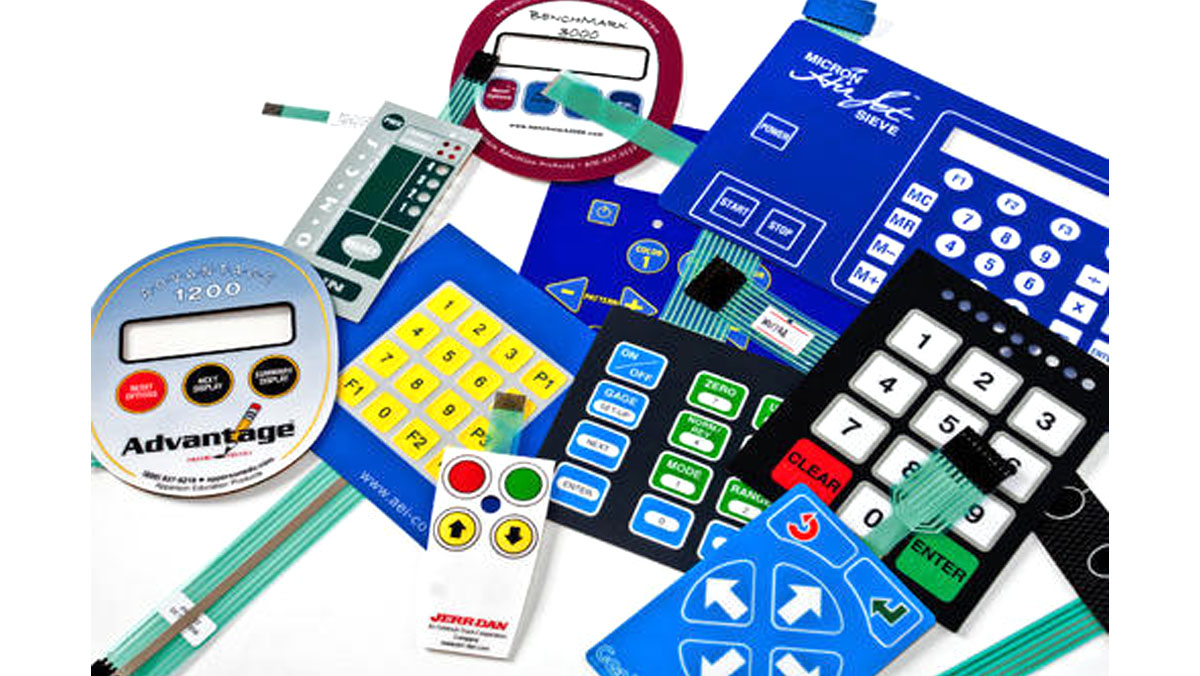Recognizing Membrane Changes: The Secret to Sturdy and Trusted Controls

What Are Membrane Switches?
Membrane buttons are an advanced option in the world of interface technology, combining performance and design flawlessly. These devices act as a user interface between users and electronic systems, incorporating numerous parts right into a small format. Commonly constructed from adaptable, slim layers of products, membrane switches are created to reply to touch, allowing customers to engage with equipment and digital devices effectively.
The main aspects of a membrane layer switch consist of a printed circuit layer, visuals overlay, and a spacer layer that stops unintentional activation. The visuals overlay can be customized to mirror brand identification or individual preferences, enhancing aesthetics while guaranteeing functionality. Membrane layer switches are generally used in various applications, including medical devices, consumer electronic devices, and commercial equipment, owing to their toughness and resistance to environmental aspects such as dampness and dirt.
One of the crucial advantages of membrane layer switches is their ability to hold up against damage, making them optimal for high-traffic settings. Furthermore, they are light-weight and need marginal space, enabling for ingenious designs in item development. Generally, membrane switches stand for a sensible and effective selection for modern-day electronic user interfaces, marrying innovation with user-centric style concepts.
How Membrane Layer Changes Work
The operation of membrane layer changes hinges on an easy yet efficient system that translates individual input right into digital signals. When a customer presses the switch, the top layer warps, allowing a conductive component in the circuit layer to make contact with a corresponding conductive pad on the underside of the visuals overlay.
The design of membrane layer buttons can differ, yet they usually integrate domes or responsive elements to supply responses to the individual, boosting the general experience - membrane switch. The materials made use of in membrane buttons, such as polyester or polycarbonate, add to their longevity and resistance to environmental variables, consisting of moisture and dirt. The printed circuits are commonly encapsulated, which secures them from wear and tear over time.
Advantages of Membrane Layer Switches

In addition, membrane buttons are recognized for their sturdiness. Created from robust materials, they are resistant to dust, moisture, and physical wear, which dramatically extends their life expectancy contrasted to traditional mechanical buttons. This sturdiness makes them particularly suitable for high-traffic environments and applications needing long life.
Another significant benefit is the convenience of cleansing and upkeep. The smooth surface area of membrane changes decreases dust build-up and is commonly unsusceptible spills, making them excellent for settings that need constant sanitization.
Moreover, membrane switches use a streamlined account, bring about a thinner style that can be integrated into various devices without including mass. This attribute not only improves the aesthetic charm yet likewise adds to a much more look at this web-site ergonomic product design.
Applications of Membrane Switches
Functional and straightforward, membrane switches find applications across a vast array of industries, consisting original site of clinical gadgets, customer electronics, and industrial devices. In the medical field, these buttons are essential to tools such as diagnostic equipment, patient tracking systems, and mixture pumps, where integrity and simplicity of cleaning are vital. Their capability to keep and stand up to rough environments capability makes them excellent for such applications.

In consumer electronic devices, membrane layer switches are utilized in items like microwaves, cleaning makers, and remotes - membrane switch. Their smooth layout allows for user-friendly interface, enhancing the overall individual experience while providing toughness and resistance to damage
Commercial tools also gains from membrane switches, especially in control panels for machinery and automation systems. These buttons use defense against dust and wetness, ensuring regular efficiency in difficult atmospheres. Their adjustable attributes enable makers to customize them to details functional demands, enhancing efficiency and capability.
Picking the Right Membrane Layer Change
When selecting a membrane layer button, it is necessary to think about various elements that influence efficiency and suitability for particular applications. The key considerations include ecological conditions, tactile responses, toughness, and style specs.
First, evaluate the operating environment; buttons revealed to wetness, chemicals, or extreme temperatures call for specific materials to make sure longevity and functionality. Next, assess the demand for tactile feedback. Relying on individual interaction, some applications may take advantage of a tactile action to verify activation, while others might prefer a non-tactile design for visual reasons.
Sturdiness is another vital aspect; membrane buttons ought to be created to endure constant usage, influences, and abrasion. Guarantee the picked switch can endure the anticipated lifecycle, especially in high-usage circumstances.

Verdict
In final thought, membrane switches serve as vital parts in the layout of reputable this hyperlink and durable control systems throughout numerous industries. The versatility of membrane switches enables for customized options that meet certain functional needs, reinforcing their significance in contemporary innovation.
Membrane changes represent a crucial element of modern-day user interface style, mixing performance with resilience in various applications.Membrane layer switches are an innovative service in the world of customer interface modern technology, incorporating performance and style flawlessly. Usually created from flexible, thin layers of products, membrane layer buttons are created to react to touch, allowing individuals to communicate with machinery and electronic gadgets successfully.
The layout of membrane buttons can differ, however they frequently integrate domes or responsive aspects to supply feedback to the customer, boosting the overall experience.In final thought, membrane switches over serve as essential parts in the style of trusted and durable control systems across numerous industries.
Comments on “Explore the Benefits of Using a Membrane Switch in Modern Devices”